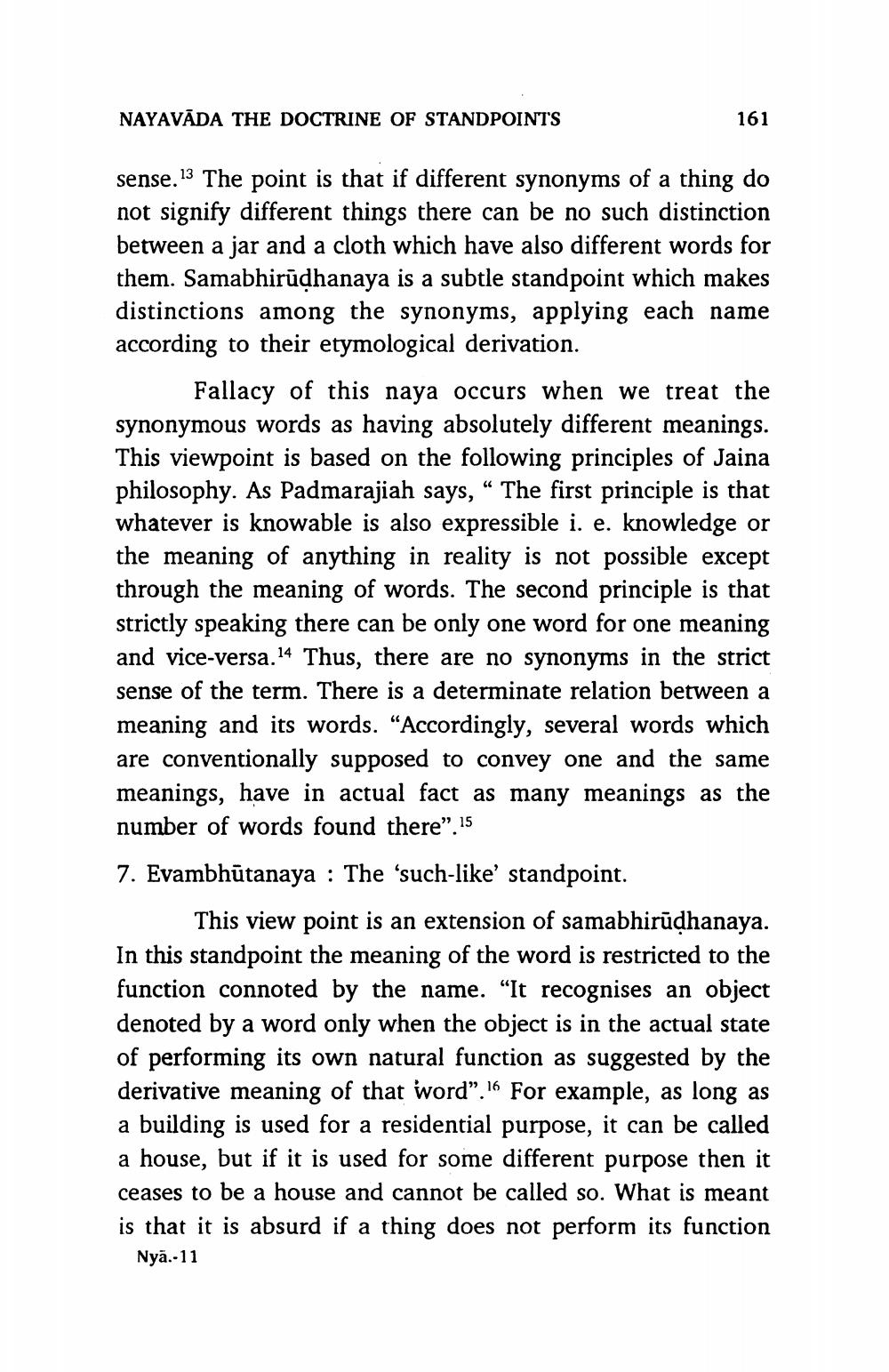________________
NAYAVĀDA THE DOCTRINE OF STANDPOINTS
161
sense. 13 The point is that if different synonyms of a thing do not signify different things there can be no such distinction between a jar and a cloth which have also different words for them. Samabhirūḍhanaya is a subtle standpoint which makes distinctions among the synonyms, applying each name according to their etymological derivation.
Fallacy of this naya occurs when we treat the synonymous words as having absolutely different meanings. This viewpoint is based on the following principles of Jaina philosophy. As Padmarajiah says, "The first principle is that whatever is knowable is also expressible i. e. knowledge or the meaning of anything in reality is not possible except through the meaning of words. The second principle is that strictly speaking there can be only one word for one meaning and vice-versa.14 Thus, there are no synonyms in the strict sense of the term. There is a determinate relation between a meaning and its words. "Accordingly, several words which are conventionally supposed to convey one and the same meanings, have in actual fact as many meanings as the number of words found there".15
7. Evambhūtanaya: The 'such-like' standpoint.
This view point is an extension of samabhiruḍhanaya. In this standpoint the meaning of the word is restricted to the function connoted by the name. "It recognises an object denoted by a word only when the object is in the actual state of performing its own natural function as suggested by the derivative meaning of that word". 16 For example, as long as a building is used for a residential purpose, it can be called a house, but if it is used for some different purpose then it ceases to be a house and cannot be called so. What is meant is that it is absurd if a thing does not perform its function Nyä.-11




